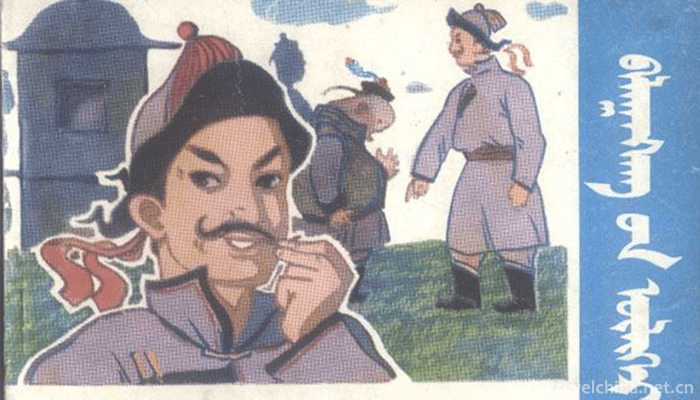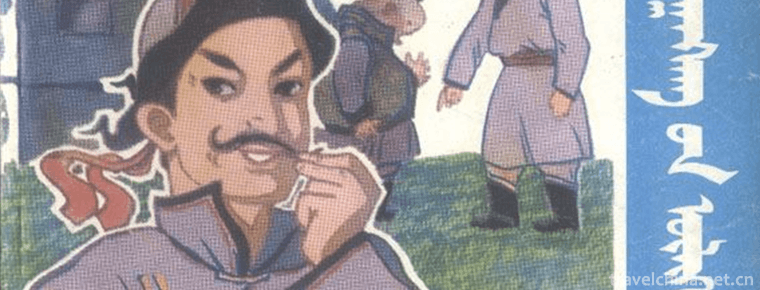The Story of Barragan
The Story of Barragan
Stories of witty figures of the Mongolian people in China. Long-term spread in Inner Mongolia, Xinjiang and other Mongolian areas. The protagonist Balagan Cang is the representative of the working people of the Mongolian nationality, who is smart, witty, humorous and witty. Barragan sympathizes with the people's suffering, advocates justice everywhere for the poor herdsmen who have been insulted and damaged, and directs the struggle against the brutal and decadent rulers of monks and customs and their ideology - religious superstition and feudal ethics and morality. Bureaucrats, herdsmen and the upper class persecuted him by adding "hooligans" and "deceivers", but each time he was wittily defeated. Among the poor people, Barragan was welcomed and praised everywhere.
On June 7, 2008, it was approved by the State Council to be included in the second batch of national intangible cultural heritage list.
Inheritance significance
The Story of Balagan Cang is a large-scale satirical and humorous story group of Mongolian people, whose main character is Balagan Cang. "Balagan Cang" is a person's name. Mongolian means "rich language" or "treasure house of wisdom". The Story of Balagan Cang is a representative work of Mongolian folk satirical literature. It belongs to the same category as the Tibetan story of Agutongba and the Uygur story of Avati. Balagan Cang is not a real person. He is an ideal figure created by the Mongolian working people according to their imagination. In Hulunbeir, Horqin, Ordos, Qinghai, Gansu and Xinjiang, Mongolian inhabited areas, as well as Buryat, Mongolia and Russia, widely spread "The Story of Balagan Cang".
Historical origin
Barragan sympathizes with the people's suffering, advocates justice everywhere for the poor herdsmen who have been insulted and damaged, and directs the struggle against the brutal and decadent rulers of monks and customs and their ideology - religious superstition and feudal ethics and morality. Bureaucrats, shepherds and upper lamas persecuted him for adding "hooligans" and "deceivers", but each time they were wittily defeated by him. Among the poor people, Barragan was welcomed and praised everywhere. "Where the wind blows, people know the name of the barrage. Wherever Balagan Cang goes, there are many friends in his home. "He is a person with a very deep mass base.
The stories show that Barragan used witty and humourous "lies" as a means to satirize bureaucrats, wealthy owners, great lamas and treacherous businessmen in the feudal era, to express the anger and hatred of the people towards them, and to express the beautiful ideal of justice overcoming evil.
Story content
The main stories are "snuff bottle in the bottom of the well", "repayment of principal and interest" and so on. Payment of principal and interest tells us that in order to punish usurers, Barragan went to his house to borrow lice.
In the old times, both Noyen and the Great Lama wanted to believe in Buddhism and do good, hoping to gain the respect and love of the people through false benevolence and righteousness. Because of Barragan's reputation for cleverness, wit and wit, some powerful and villainous officials deliberately found him to use some difficult problems to make him difficult. As a result, they were often teased to destroy their prestige and amuse themselves.
The story "Working for a Miser and Adhering to Three Habits" tells us that there is a miser who is very strict with his employees, although his cattle and sheep are all over the hillside. Barragan applied to revenge the employees.
Story background
Balagan Warehouse is a Uliger with the theme of shaping ideal characters and spreading national wisdom. Balagan Cang is not a real person. He is an ideal figure created by the Mongolian working people according to their wishes, and a representative of wisdom. In Mongolia, because people of different regions and times call some stories they have created as stories of Balagan Cang, new stories are constantly emerging and a large group of stories with distinctive features is gradually formed.
Commented on the story
Barragana's story uses exaggerated and grotesque irony to expose the whipping of villains and ugly things. It is funny, humorous and shines with wisdom. Its language is fresh, simple and sharp. The plot structure has the characteristics of riddles. It often sets the finishing touches at the key points or at the end of the story. Once a point is broken, it is full of interesting and makes the readers understand the profound truth in the laughter.


-
1.Altai mountains
The Altai mountains are located in the northern part of the Xinjiang Uygur Autonomous Region and the western part of Mongolia. Northwest extends to Russia
Time 2018-11-01 -
2.Linhai Qishi Scenic Area
Linhai Qishi Scenic Area is located in Tangwanghe District, Yichun City, Heilongjiang Province. Scenic area covers 190 square kilometers. It is a new eco-tourism area and National Geological Heritage
Time 2019-01-30 -
3.Pingle Ancient Town
Pingle Ancient Town, located 93 kilometers southwest of Chengdu and 18 kilometers southwest of Qionglai City, is a famous historical and cultural town in China.
Time 2019-02-07 -
4.Gallequin Art
Jia Liqin is made by Jia Xiwang of Jia Liguo, who imitates Chinese Han Zheng. The shape is similar to that of Zheng, and it is also a string and a pillar. There are twenty-one strings in the current G
Time 2019-04-30 -
5.Black Tea Production Techniques
Black tea, originally known as "Border Tea", was smuggled across the border by merchants as early as the end of the 16th century. In the Ming Dynasty, black tea was designated as
Time 2019-05-03 -
6.Xingyiquan
Xingyiquan, also known as Xingyiquan, is one of the traditional Chinese boxing. Although there are different opinions on its origin, Ji Jike (1602-1680), a native of Puzhou, Shanxi Province, was widel
Time 2019-07-08 -
7.Civil Aviation Flight University Of China
The school is directly under the Civil Aviation Administration of China. Its predecessor was established in May 1956 with the approval of Premier Zhou Enlai. Chairman Mao Zedong appointed the aviation
Time 2019-08-31 -
8.Tie Muer Buhua
Tie Muer Buhua (1286 - 1368). Yuan will be the first to stay. Rate troops to go Xiangyang He won the battle with song, fan and Wen Hu in the Shigi shoal beach. Later from Bo Yan Song, in Yang Luo Bao
Time 2019-09-14 -
9.Cao Zhang
Cao Zhang (189 years - 223 August 1st), Zi Zi Wen. Pei Guo Qiao County ( Anhui People in Bozhou. Three countries period the Wei state of the Three-Kingdoms Period Imperial clan, general, Wei Wu Di Cao
Time 2019-09-15 -
10.Neijiang social security
In 2019, there were 109600 people participating in the endowment insurance (including retirees) of government institutions, 842500 people of enterprise employees (including retirees), and 1501700 people of urban and rural residents. 52100 new urban jobs
Time 2020-12-16 -
11.Meishan Education
By the end of 2019, there are 824 schools of various types, including 435 kindergartens, 176 primary schools, 165 junior high schools, 26 senior high schools, 17 secondary vocational schools and 5 special schools. By the end of the year, there were 397900 students
Time 2020-12-18 -
12.Dazhou Railway
Railway lines: Chengdu Chengdu Railway, Xiangyang Chongqing railway, Dazhou Wanzhou railway, Daba railway and Chengdu Dazhou Wanzhou high speed railway (planned)
Time 2020-12-20